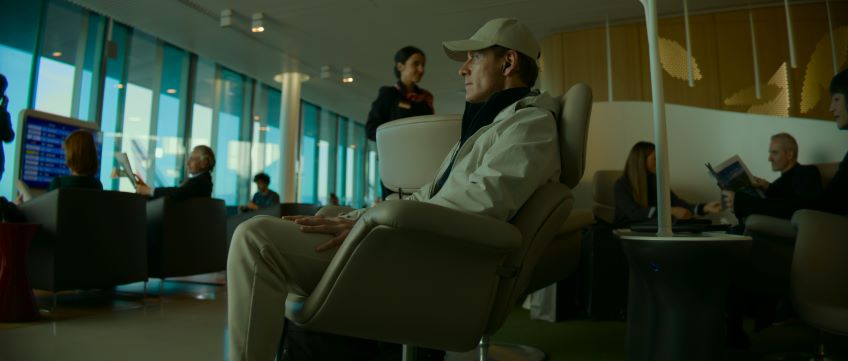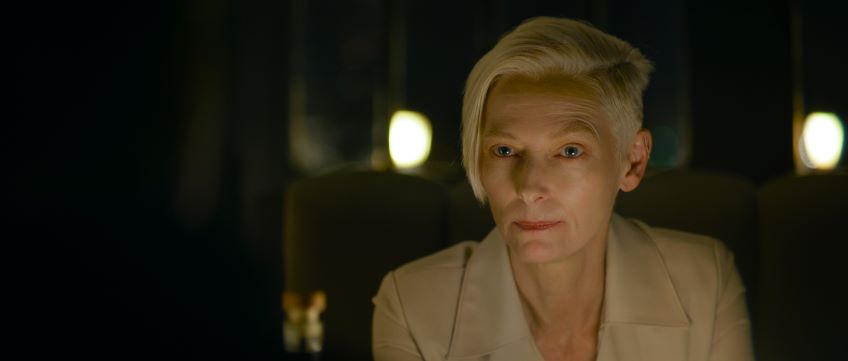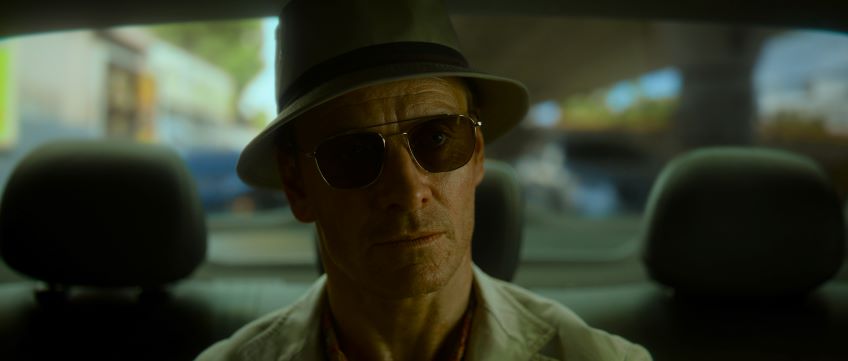Joyce Glasser reviews The Killer (October 27, 2023), Cert 15, 113 mins. In cinemas and from November 10, on Netflix
For the first fifteen minutes of David Fincher’s entertaining movie, Michael Fassbender (7 Years a Slave, Hunger, Shame) is the only character on the screen, reflecting the lonely life of a hitman. But you keep seeing and hearing Keanu Reeves, so synonymous has he become with the image of the ultra-cool big screen hitman. Gradually, Fassbender comes into his own and you can’t take your eyes off him. Nor should you. He has many passports but no name. And he’s lethal.
The Killer, like Reeves’ John Wick films, is an action thriller, although any suspense you feel is not for the central character but for those he goes after. Both fictitious assassins do a lot of globetrotting but there’s a lower body count here even though David Fincher, who directed the excellent serial killer films Seven and Zodiac, as well as The Girl with the Dragon Tattoo, is no stranger to gore and violence.
The most striking difference between The Killer and the John Wick films, however, is that in the latter everyone (everywhere and often all at once) is after Wick, whereas no one is after Fassbender’s character. John Wick is widely recognised (remember those bounty posters). The killer spends his life ensuring he remains a spectre.

Since the killer spends most of his time alone, he talks to himself although his interior monologues sound like a “how to” book or the memoir that cannot be published until after his death. It’s fun for a while but, in the first chapter goes on too long.
Much of the monologue is the killer sharing tips with us as if showing off his professionalism and discipline. ‘I used to book through Air B & B, not anymore. Those nannies like their cameras.’ Tips for blending in and going unnoticed include dressing like a German tourist and eating in McDonald’s. ‘There are 1,500 McDonald’s in France,’ he tells us (the killer, who needs to be in control of everything to control himself, is big on statistics).
Part of the fun is observing the cool, controlled actions before and after an assassination, rather like a doctor who has a protocol for operations. It all comes down to “preparation” he tells us as we see him squatting in an empty Parisian room in Chapter I: Paris. Yet something goes wrong. Has the long wait for the phone call that gives him the green light gotten the better of him?
‘Stick to your plan. Anticipate don’t improvise,’ he repeats, more to himself than for his memoir this time. When the plan has to be ditched, training comes in. Leaving in a hurry is a series of track covering actions that are so innate he does not have to spend time thinking. The gun goes in the river, a succession of mobile phones are tossed, an air plane ticket is purchased under one of his hundreds of aliases and then he’s not even on the plane. He gives up his seat on an overbooked journey and is rewarded by the airline with a sleepless night in an anonymous airport hotel.
When the killer finally returns to his only fixed abode, a spacious seaside villa with a gorgeous pool in the Dominican Republic, he discovers his hideaway has been compromised and his girlfriend is on life support in hospital. She knows who did it. A nurse tells him, ‘There was a man and a woman and they were not disguised.’
The killer does some investigation in a cab driver’s log book for starters and then begins, calmly and methodically, his revenge. He repeats his self-preservation tips to himself. ‘Trust no one’ and ‘never yield an advantage.’ ‘Fight only the battle you have to fight; forbid empathy, and ask yourself, what’s in it for me?’

Chapter 3: The Lawyer takes us to New Orleans (1,000 restaurants, 1 menu). Arguably the best segment, the tension level is high and it’s the only chapter where you hope the killer will relax his rule on empathy. He is disguised as a janitor with a wheelie-bin (the size of an adult male) for his visit to the office of the corrupt lawyer (Charles Parnell) who hired him for the Paris job, acting for a now angry client. The lawyer’s hapless assistant, Dolores (Kerry O’Malley) hopes that by assisting the killer with addresses in a hidden index file, and showing fortitude, she will be spared.
After some physical exertion in Florida, in Chapter 5, New York, the Expert, the killer tails a fellow assassin (Tilda Swinton) to a restaurant in a scene that evokes the artificiality and strangeness of the John Wick films. Fincher invites us to one of the most bizarre and painfully uncomfortable dining experiences of the year.
If this is the first time Fassbender has worked with Fincher, the director is surrounded by a familiar team behind the camera. The screenplay is adapted from Alexis “Matz” Nolent and Luc Jacamon’s graphic novel series by Andrew Kevin Walker who scripted Seven, and the striking cinematography is by Erik Messerschmidt who won an Academy Award for Fincher’s last film, Mank. The idiosyncratic, at times overused music is from Atticus Matthew Cowper Ross and Trent Reznor, who won the Academy Award for Best Original Score for Fincher’s The Social Network.
The Killer is a case of style, or coolness, over substance, and we are surprised to find ourselves rooting for this mechanical murderer. The climatic sequence, in Chicago, might leave you puzzled or trying to recall one of the killer’s rules to explain an uncharacteristic response. The other possibility is that all will come together in a sequel.




